Nosferatu
9.2 /10 1 Votes
97% Rotten Tomatoes Director F. W. Murnau Duration | 8/10 IMDb 4/4 Roger Ebert Genre Horror, Mystery Country Weimar Republic | |||||||||||||||||||||||||||||||||
 | ||||||||||||||||||||||||||||||||||
Language Silent filmGerman and English intertitles Release date 4 March 1922 (1922-03-04) (Germany) Initial release February 17, 1922 (The Hague) Cast (Graf Orlok "Nosferatu"), (Hutter), (Ellen Hutter), (Knock), (Westenra), (Lucy Westenra) Similar movies Independence Day , California Winter Tagline A symphony of horror | ||||||||||||||||||||||||||||||||||
Nosferatu the vamprye 1979
Nosferatu, eine Symphonie des Grauens (translated as Nosferatu: A Symphony of Horror; or simply Nosferatu) is a 1922 German Expressionist horror film, directed by F. W. Murnau, starring Max Schreck as the vampire Count Orlok. The film, shot in 1921 and released in 1922, was an unauthorized adaptation of Bram Stoker's Dracula (1897). Various names and other details were changed from the novel: for instance, "vampire" became "Nosferatu" and "Count Dracula" became "Count Orlok".
Contents
- Nosferatu the vamprye 1979
- A scene from nosferatu
- Plot
- Cast
- Production
- Music
- Deviations from the novel
- Release
- Reception and legacy
- In popular culture
- Remakes
- References
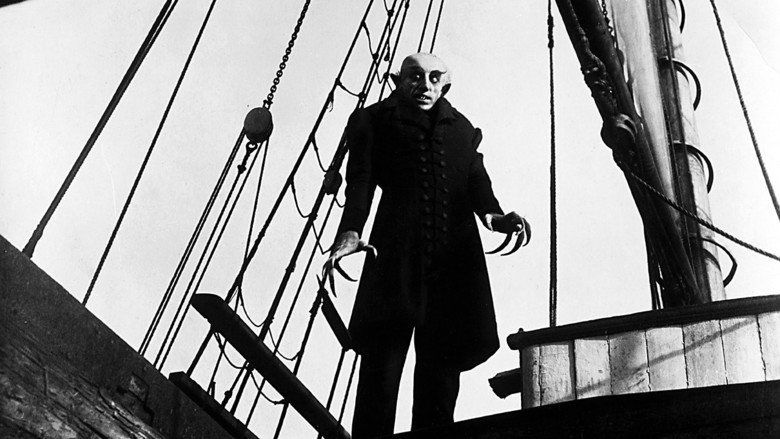
Stoker's heirs sued over the adaptation, and a court ruling ordered that all copies of the film be destroyed. However, a few prints of Nosferatu survived, and the film came to be regarded as an influential masterpiece of cinema.
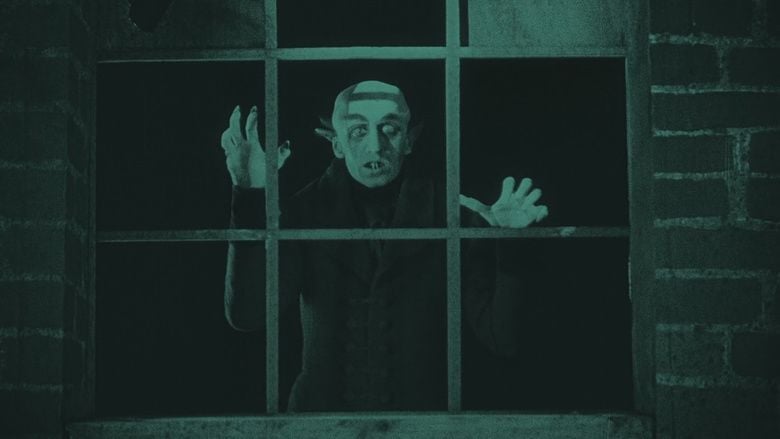
The film was released in the United States on 3 June 1929, seven years after its original premiere in Germany.
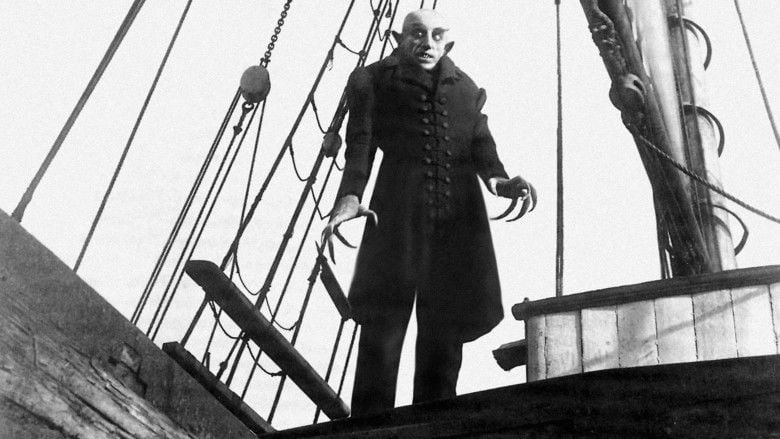
A scene from nosferatu
Plot

In 1838, Thomas Hutter lives in the fictional German city of Wisborg. His employer, Knock, sends Hutter to Transylvania to visit a new client named Count Orlok. Hutter entrusts his loving wife Ellen to his good friend Harding and Harding's sister Annie, before embarking on his long journey. Nearing his destination in the Carpathian Mountains, Hutter stops at an inn for dinner. The locals become frightened by the mere mention of Orlok's name and discourage him from traveling to his castle at night, warning of a werewolf on the prowl. The next morning, Hutter takes a coach to a high mountain pass, but the coachmen declines to take him any further than the bridge as nightfall is approaching. A black-swathed coach appears after Hutter crosses the bridge and the coachman gestures for him to climb aboard. Hutter is welcomed at a castle by Count Orlok. When Hutter is eating dinner and accidentally cuts his thumb, Orlok tries to suck the blood out, but his repulsed guest pulls his hand away.

Hutter wakes up to a deserted castle the morning after and notices fresh punctures on his neck which, in a letter he sends by courier on horseback to be delivered to his devoted wife, he attributes to mosquitoes. That night, Orlok signs the documents to purchase the house across from Hutter's own home in Wisborg and notices a photo of Hutter's wife remarking that she has a lovely neck. Reading a book about vampires that he took from the local inn, Hutter starts to suspect that Orlok is Nosferatu, the "Bird of Death." He cowers in his room as midnight approaches, but there is no way to bar the door. The door opens by itself and Orlok enters, his true nature finally revealed, and Hutter hides under the bedcovers and falls unconscious. At the same time this is happening, his wife awakens from her sleep and in a trance walks towards the balcony and onto the railing. Alarmed, Harding shouts Ellen's name and she faints while he asks for a doctor. After the doctor arrives, she shouts Hutter's name remaining in the trance and apparently able to see Orlok in his castle threatening her unconscious husband. The doctor believes this trance-like state is due to "blood congestion". The next day, Hutter explores the castle. In its crypt, he finds the coffin in which Orlok is resting dormant. Hutter becomes horrified and dashes back to his room. Hours later from the window, he sees Orlok piling up coffins on a coach and climbing into the last one before the coach departs. Hutter escapes the castle through the window, but is knocked unconscious by the fall and awakens in a hospital.
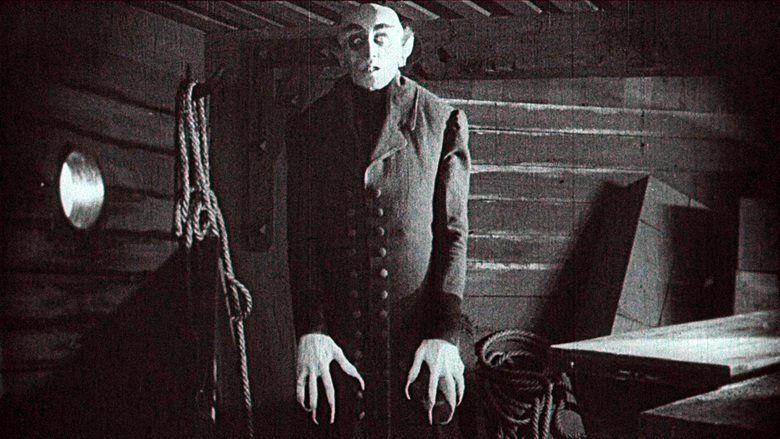
When he is sufficiently recovered, he hurries home. Meanwhile, the coffins are shipped down river on a raft. They are transferred to a schooner, but not before one is opened by the crew, revealing a multitude of rats. The sailors on the ship get sick one by one; soon all but the captain and first mate are dead. Suspecting the truth, the first mate goes below to destroy the coffins. However, Orlok awakens and the horrified sailor jumps into the sea. Unaware of his danger, the captain becomes Orlok's latest victim when he ties himself to the wheel. When the ship arrives in Wisborg, Orlok leaves unobserved, carrying one of his coffins, and moves into the house he purchased. The next morning, when the ship is inspected, the captain is found dead. After examining the logbook, the doctors assume they are dealing with the plague. The town is stricken with panic, and people are warned to stay inside.
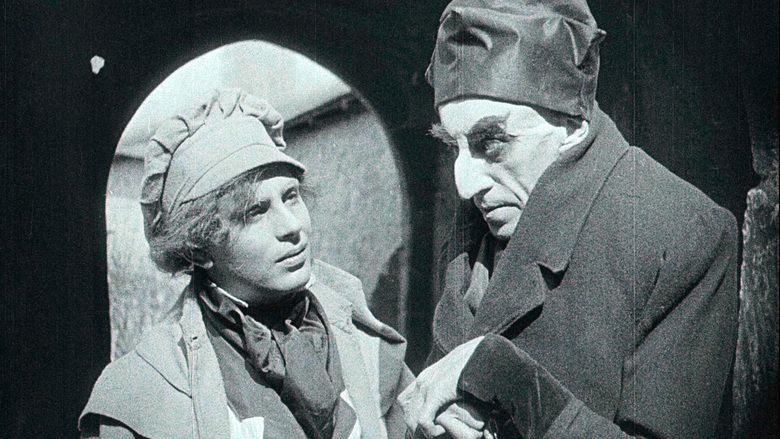
There are many deaths in the town, which are blamed on the plague. Knock, who had been committed to a psychiatric ward, escapes after murdering the warden. The townspeople give chase, but he eludes them by climbing a roof, then using a scarecrow. Meanwhile, Orlok stares from his window at the sleeping Ellen. Against her husband's wishes, Ellen had read the book he found. The book claims that the way to defeat a vampire is for a woman who is pure in heart to distract the vampire with her beauty all through the night. She opens her window to invite him in, but faints. (In a deleted scene, the actress who played the hero's sister, Ruth Landshoff, was featured in this scene, where she was running along a beach fleeing from the vampire. That scene is not in any version or restoration of the film, nor in the original script). When Hutter revives her, she sends him to fetch Professor Bulwer. After he leaves, Orlok comes in. He becomes so engrossed drinking her blood that he forgets about the coming day. When a rooster crows, Orlok vanishes in a puff of smoke as he tries to flee. Ellen lives just long enough to be embraced by her grief-stricken husband. The last scene shows Count Orlok's ruined castle in the Carpathian Mountains, symbolizing the end of his reign of terror.
Cast
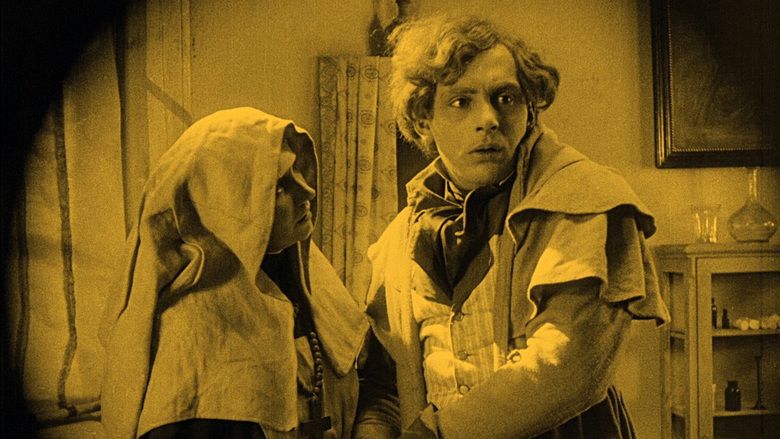
Production
The studio behind Nosferatu, Prana Film, was a short-lived silent-era German film studio founded in 1921 by Enrico Dieckmann and occultist-artist Albin Grau, named for the Hindu concept of prana. Although the studio's intent was to produce occult- and supernatural-themed films, Nosferatu was its only production, as it declared bankruptcy in order to dodge copyright infringement suits from Bram Stoker's widow Florence Balcombe.
Grau had had the idea to shoot a vampire film, the inspiration of which had risen from a war experience: in the winter of 1916, a Serbian farmer told him that his father was a vampire and one of the undead.
Diekmann and Grau gave Henrik Galeen, a disciple of Hanns Heinz Ewers, the task to write a screenplay inspired by Bram Stoker's 1897 novel Dracula, despite Prana Film not having obtained the film rights. Galeen was an experienced specialist in dark romanticism; he had already worked on Der Student von Prag (The Student of Prague) in 1913, and the screenplay for Der Golem, wie er in die Welt kam (The Golem: How He Came into the World) (1920). Galeen set the story in the fictional north German harbour town of Wisborg. He changed the character's names and added the idea of the vampire bringing the plague to Wisborg via rats on the ship, and left out the Van Helsing vampire hunter character. Galeen's Expressionist style screenplay was poetically rhythmic, without being so dismembered as other books influenced by literary Expressionism, such as those by Carl Mayer. Lotte Eisner described Galeen's screenplay as "voll Poesie, voll Rhythmus" ("full of poetry, full of rhythm").
Filming began in July 1921, with exterior shots in Wismar. A take from Marienkirche's tower over Wismar marketplace with the Wasserkunst Wismar served as the establishing shot for the Wisborg scene. Other locations were the Wassertor, the Heiligen-Geist-Kirche yard and the harbour. In Lübeck, the abandoned Salzspeicher served as Nosferatu's new Wisborg house, the one of the churchyard of the Aegidienkirche served as Hutter's, and down the Depenau a procession of coffin bearers bore coffins of supposed plague victims. Many scenes of Lübeck appear in the hunt for Knock, who ordered Hutter in the Yard of Füchting to meet Count Orlok. Further exterior shots followed in Lauenburg, Rostock and on Sylt. The exteriors of the film set in Transylvania were actually shot on location in northern Slovakia, including the High Tatras, Vrátna Valley, Orava Castle, the Váh River, and Starhrad. The team filmed interior shots at the JOFA studio in Berlin's Johannisthal locality and further exteriors in the Tegel Forest.
For cost reasons, cameraman Fritz Arno Wagner only had one camera available, and therefore there was only one original negative. The director followed Galeen's screenplay carefully, following handwritten instructions on camera positioning, lighting, and related matters. Nevertheless, Murnau completely rewrote 12 pages of the script, as Galeen's text was missing from the director's working script. This concerned the last scene of the film, in which Ellen sacrifices herself and the vampire dies in the first rays of the Sun. Murnau prepared carefully; there were sketches that were to correspond exactly to each filmed scene, and he used a metronome to control the pace of the acting.
Music
The original score was composed by Hans Erdmann to be performed by an orchestra during the projection. It is also said that the original music was recorded during a screening of the film. However, most of the score has been lost, and what remains is only a reconstitution of the score as it was played in 1922. Thus, throughout the history of Nosferatu screenings, many composers and musicians have written or improvised their own soundtrack to accompany the film. For example, James Bernard, composer of the soundtracks of many Hammer horror films in the late 1950s and 1960s, has written a score for a reissue.
Deviations from the novel
The story of Nosferatu is similar to that of Dracula and retains the core characters—Jonathan and Mina Harker, the Count, etc.—but omits many of the secondary players, such as Arthur and Quincey, and changes all of the characters' names – although in some recent releases of this film, which is now in the public domain in the United States but not in most European countries, the written dialogue screens have been changed to use the Dracula versions of the names. The setting has been transferred from Britain in the 1890s to Germany in 1838.
In contrast to Dracula, Orlok does not create other vampires, but kills his victims, causing the townfolk to blame the plague, which ravages the city. Also, Orlok must sleep by day, as sunlight would kill him, while the original Dracula is only weakened by sunlight. The ending is also substantially different from that of Dracula. The count is ultimately destroyed at sunrise when the "Mina" character sacrifices herself to him. The town called "Wisborg" in the film is in fact a mix of Wismar and Lübeck; in other versions of the film, the name of the city had been changed, for unknown reasons, back to "Bremen".
Release
Shortly before the premiere, an advertisement campaign was placed in issue 21 of the magazine Bühne und Film, with a summary, scene and work photographs, production reports, and essays, including a treatment on vampirism by Albin Grau. Nosferatu's preview premiered on 4 March 1922 in the Marmorsaal of the Berlin Zoological Garden. This was planned as a large society evening entitled Das Fest des Nosferatu (Festival of Nosferatu), and guests were asked to arrive dressed in Biedermeier costume. The cinema premiere itself took place on 15 March 1922 at Berlin's Primus-Palast.
In the 1930s sound version, Die zwölfte Stunde – Eine Nacht des Grauens (The Twelfth Hour: A Night of Horror), which is less commonly known, was a completely unauthorised and re-edited version of the film that was released in Vienna (capital of Austria), on 16 May 1930, with sound-on-disc accompaniment, with a recomposition of Hans Erdmann's original score (by Georg Fiebiger, born 22. June 1901 in Breslau, died in 1950 ) was a German production manager and composer of film music. But however, with sound effects only. It had an alternate ending that was much happier than the original, the characters were all renamed again, this time Count Orlok's name was changed to Prince Wolkoff, Knock became Karsten, Hutter and Ellen became Kundberg and Margitta, and Lucy being changed to Maria. This version, of which Murnau was unaware, contained many scenes that were filmed by Murnau but that were not shown at the original premiere and had been taken out before being seen by public audiences 8 years earlier. It also contained additional footage not filmed by Murnau himself but instead by a cameraman Günther Krampf under the direction of an unknown Dr. Waldemar Roger (also known as Waldemar Ronger), supposedly also a film editor and lab chemist. The name of the silent film director F. W. Murnau is no longer mentioned in the preamble. This version (edited to approx. 80 min. for running time) was presented on 5 June 1981 at the French Cinematheque. In the recent 2012 restoration of the film, the Friedrich Wilhelm Murnau Stiftung, claim that they have several copies of this version. The film was originally banned completely in Sweden, however the ban was lifted after 20 years and has since been shown on television.
Reception and legacy
Nosferatu brought Murnau into the public eye, especially since his film Der brennende Acker (The Burning Soil) was released a few days later. The press reported extensively on Nosferatu and its premiere. With the laudatory votes, there was also occasional criticism that the technical perfection and clarity of the images did not fit the horror theme. The Filmkurier of 6 March 1922 said that the vampire appeared too corporeal and brightly lit to appear genuinely scary. Hans Wollenberg described the film in photo-Stage No. 11 of 11 March 1922 as a "sensation" and praised Murnau's nature shots as "mood-creating elements." In the Vossische Zeitung of 7 March 1922, Nosferatu was praised for its visual style.
This was the only Prana Film; the company declared bankruptcy after Stoker's estate, acting for his widow, Florence Stoker, sued for copyright infringement and won. The court ordered all existing prints of Nosferatu burned, but one purported print of the film had already been distributed around the world. This print was duplicated over the years, kept alive by a cult following, making it an example of an early cult film.
The film has received overwhelmingly positive reviews. On Rotten Tomatoes it has a "Certified Fresh" label and holds a 97% "fresh" rating based on 62 reviews. The website's critical consensus reads, "One of the silent era's most influential masterpieces, Nosferatu's eerie, gothic feel—and a chilling performance from Max Schreck as the vampire—set the template for the horror films that followed." It was ranked twenty-first in Empire magazine's "The 100 Best Films of World Cinema" in 2010. In 1997, critic Roger Ebert added Nosferatu to his list of The Great Movies, writing:
Here is the story of Dracula before it was buried alive in clichés, jokes, TV skits, cartoons and more than 30 other films. The film is in awe of its material. It seems to really believe in vampires. ... Is Murnau's "Nosferatu" scary in the modern sense? Not for me. I admire it more for its artistry and ideas, its atmosphere and images, than for its ability to manipulate my emotions like a skillful modern horror film. It knows none of the later tricks of the trade, like sudden threats that pop in from the side of the screen. But "Nosferatu" remains effective: It doesn’t scare us, but it haunts us.
In popular culture
Remakes
A remake by director Werner Herzog, Nosferatu the Vampyre, starred Klaus Kinski (as Count Dracula, not Orlok), and was released in 1979.
A planned "remix" (remake) by director David Lee Fisher, has been in development after being successfully funded on Kickstarter on 3 December 2014. On 13 April 2016, it was reported that Doug Jones had been cast as Count Orlok in the film and the filming had begun. The film will use green screen to insert colorized backgrounds from the original film atop live-action, a process Fisher previously used for The Cabinet of Dr. Caligari.
On 29 July 2015, it was reported that a remake of the film would be written and directed by The Witch director Robert Eggers, and produced by Jay Van Noy and Lars Knudsen. On 12 November 2016, Eggers reaffirmed the film as his next project.
Getty Images released a version layered with sound, music and voices from their sound effects library. The version shows the various layers of sound as one watches the original film. It can be found at http://nonsilentfilm.com/en/
References
Nosferatu WikipediaNosferatu, eine Symphonie des Grauens IMDbNosferatu, eine Symphonie des Grauens Rotten TomatoesNosferatu, eine Symphonie des Grauens Roger EbertNosferatu themoviedb.org
